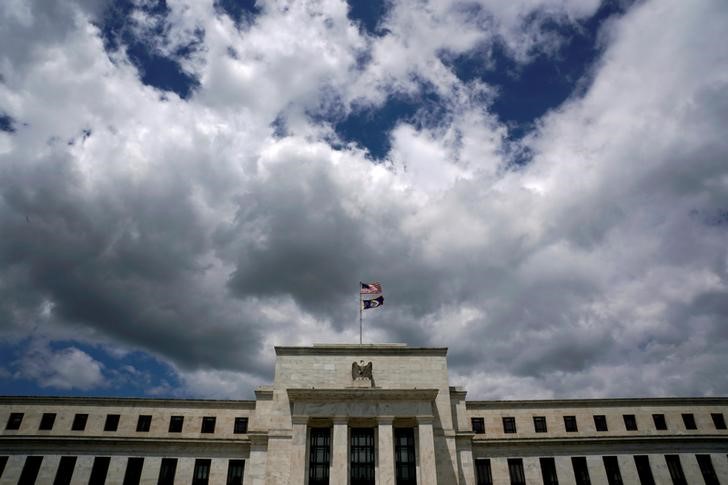 © Reuters. FILE PHOTO: Clouds over the Federal Reserve in Washington
© Reuters. FILE PHOTO: Clouds over the Federal Reserve in WashingtonWASHINGTON, (Reuters) – The U.S. Federal Reserve, looking past a recent stock market sell-off and concern about inflation, said it sees steady growth continuing and no serious risks on the horizon the might pause its planned pace of rate hikes.
“The economic expansion continues to be supported by steady job gains, rising household wealth, favorable consumer sentiment, strong economic growth abroad, and accommodative financial conditions,” the Fed’s Washington-based Board of Governors wrote in its semiannual report to Congress on monetary policy. “Upbeat business sentiment appears to have supported solid growth over the past year.”
Fed officials anticipate raising rates three times this year.
The report was released Friday ahead of new Chairman Jerome Powell’s first public outing next week, when he testifies separately before House and Senate committees.
It also comes after a major rewrite of the U.S. tax code, and a stock market sell-off that at one point had shaved 10 percent from the value of major indexes and marked an abrupt return of market volatility.
The Fed noted that even after the sell-off, and taking account of the higher corporate profits likely to flow from the recent tax cuts and support higher stock prices, “valuation pressures continue to be elevated across a range of asset classes, including equities and commercial real estate.”
The use of leverage “has been increasing in some areas,” the Fed said, noting in particular “the provision of margin credit to equity investors such as hedge funds” and other parts of the “nonbank financial sector.” Household debt has also risen as has business sector leverage “particularly among speculative-grade firms.”
Still, the Fed said, “overall vulnerabilities in the U.S. financial system remain moderate on balance,” with banks better buffeted against any trouble due to their “strong capital position.” Even at their current high level, the Fed noted, stock price-to-earnings ratios were still below those during the exuberant late 1990s.
In general, that document portrayed an economy whose households had achieved record levels of wealth – by September 2017 household net worth was 6.7 times disposable income, the highest reading in that series – with no obvious instabilities to risk continued steady progress.
Fiscal policy would provide a modest bump in gross domestic product in 2018, the document said, but there was no concern about an imminent breakout of inflation.
That’s despite the fact that the Fed judged labor markets as largely recovered from the 2007-2009 recession. The labor market across almost all dimensions “can be cautiously interpreted as consistent with…full employment.”
Fusion Media or anyone involved with Fusion Media will not accept any liability for loss or damage as a result of reliance on the information including data, quotes, charts and buy/sell signals contained within this website. Please be fully informed regarding the risks and costs associated with trading the financial markets, it is one of the riskiest investment forms possible.
Source: Investing.com




























